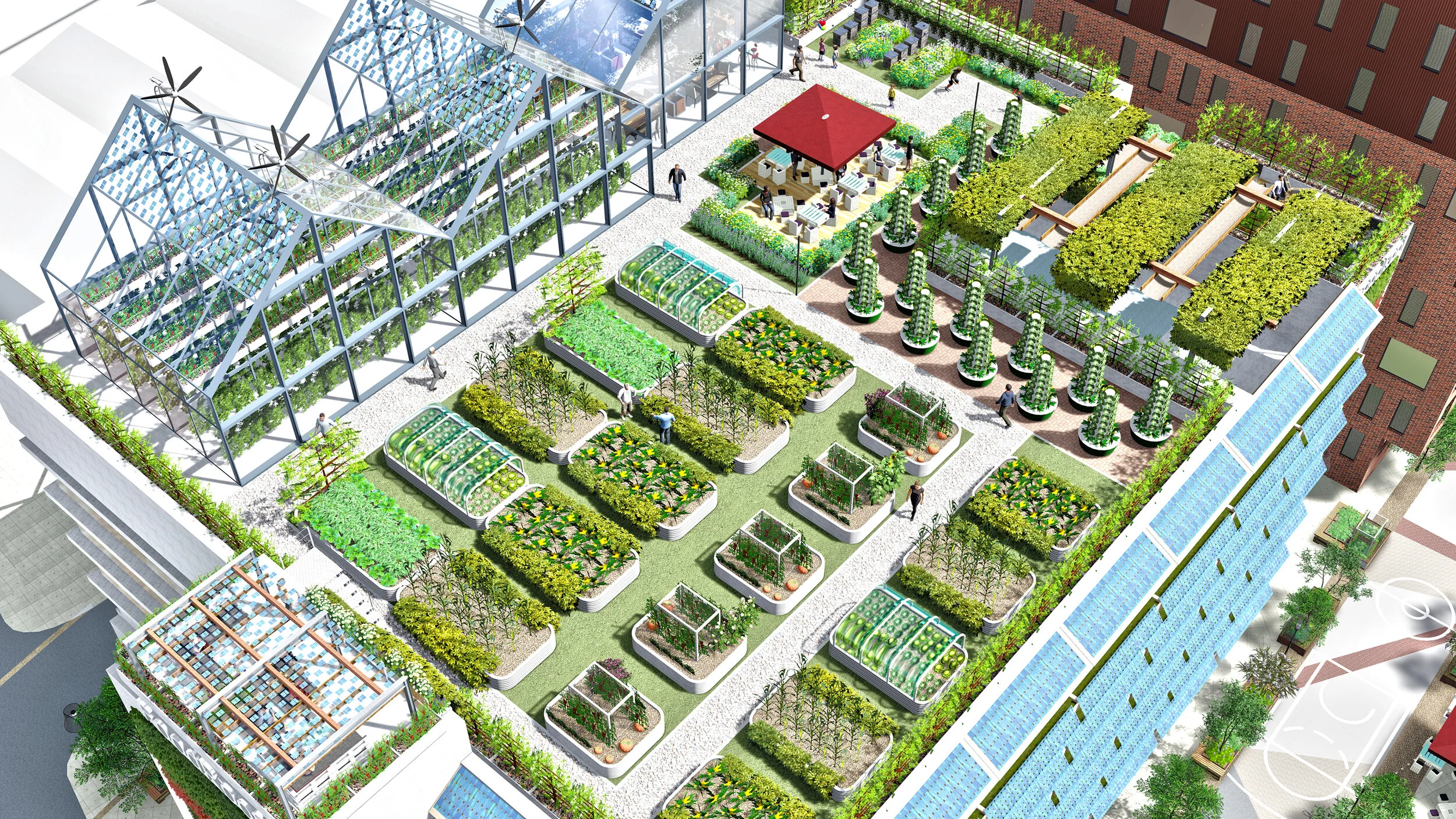In my opinion, I do not believe farming should be carried out in just rural areas. It is important to know that urban farming has become an important trend changing the way food is produced and consumed in cities in recent years. Urban farming provides creative answers to the pressing issues of food security, environmental sustainability, and urban living quality by integrating agriculture into urban areas. Let’s examine urban farming’s definition, advantages, and the various urban farming methods.
What is Urban Farming?
Urban farming refers to the practice of cultivating, processing, and distributing food in or around urban areas. Unlike traditional rural farming, urban farming utilizes rooftops, vacant lots, community gardens, and even indoor spaces to grow food. It encompasses various methods, including vertical farming, hydroponics, aquaponics, and traditional soil-based cultivation, adapting agricultural practices to the constraints and opportunities of urban environments.
Also read: Powering Progress: Solutions to Nigeria’s Electricity Challenges for MSMEs
What are the benefits of urban farming?
1.Urban farming increases access to fresh, locally-grown produce, reducing dependence on long supply chains that can be vulnerable to disruptions.
2.Sustainable practices like composting organic waste and using rainwater harvesting systems reduce the environmental footprint of food production.
- Urban farming creates jobs and business opportunities in agriculture, food processing, and distribution within urban settings.
4.Community gardens and urban farms foster social interaction and cooperation, strengthening community bonds.
- Access to fresh, organic produce encourages healthier eating habits and can lead to improved overall health.
What are the various urban farming methods?
- Vertical Farming: Utilizes vertically stacked layers to grow crops, maximizing space in urban environments. This often employs hydroponic or aeroponic systems, where plants grow in nutrient-rich water or mist, rather than soil.
- Hydroponics and Aquaponics: Hydroponics involves growing plants in a water-based solution enriched with essential nutrients. Aquaponics combines hydroponics with aquaculture, using fish waste to provide nutrients for the plants, creating a closed-loop system.
- Rooftop Gardens: Converts unused rooftop spaces into productive gardens. This helps insulate buildings, reducing energy costs, and provides fresh produce for local consumption.
- Community Gardens: This involves the use of shared spaces where residents come together to grow food collectively. This is often supported by local governments, non-profits, and community organizations.
Getting Started with Urban Farming
- Assess Available Space: Identify potential spaces for urban farming, such as rooftops, balconies, vacant lots, or community spaces. Consider the amount of sunlight, water access, and space available for different types of farming methods.
- Choose Suitable Crops: Select crops that are well-suited to urban farming conditions, such as herbs, leafy greens, tomatoes, and strawberries. Consider the climate, growing season, and available resources when choosing crops.
- Engage the Community:Involve local residents, businesses, and organizations in urban farming projects. Foster a sense of ownership and collaboration to ensure the success and sustainability of the initiative.
- Leverage Technology: Utilize smart farming technologies, such as automated watering systems, climate control, and monitoring apps, to optimize urban farming operations. Stay informed about advancements in urban agriculture to continuously improve practices.
Also read: The Ripple Effect: How Customer Negligence Impacts Banks and Corporate Organizations
Conclusion
Urban farming is a vibrant and innovative way to tackle some of the most important issues of today, such as community development, health, and environmental sustainability in addition to food security. Redefining cities as dynamic, robust, and self-sufficient agricultural landscapes can help them become more resilient. Urban farming provides a way forward for an increasingly sustainable and environmentally friendly future, regardless of the size of your balcony garden or your position as a community leader wanting to revitalize an abandoned land.
By: Olaiya Anuolu Queensly
G-Consulting International Service Limited

